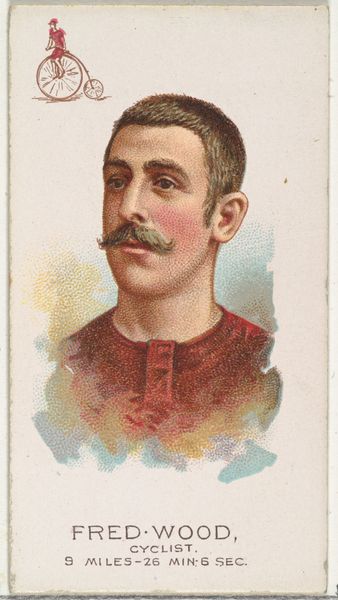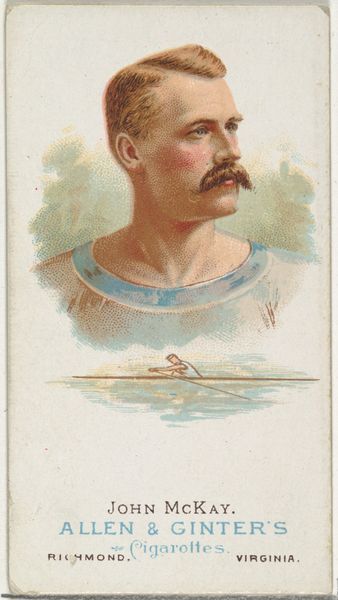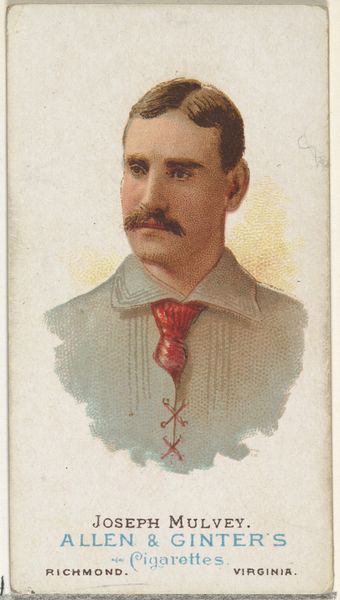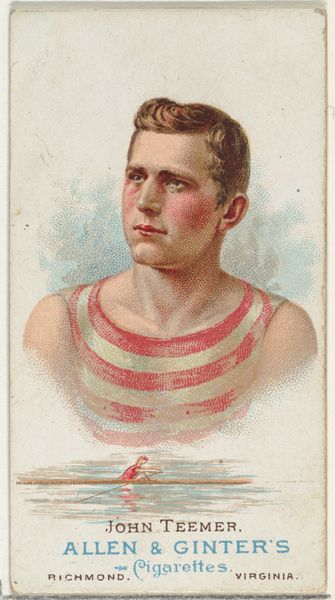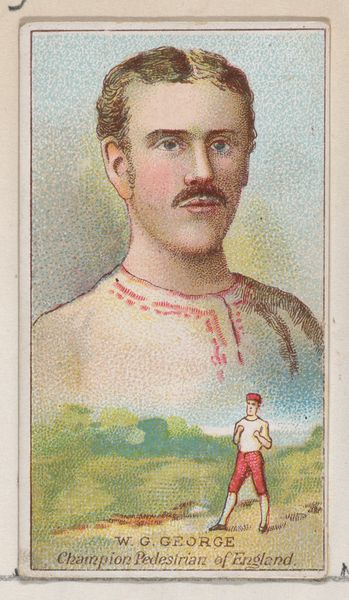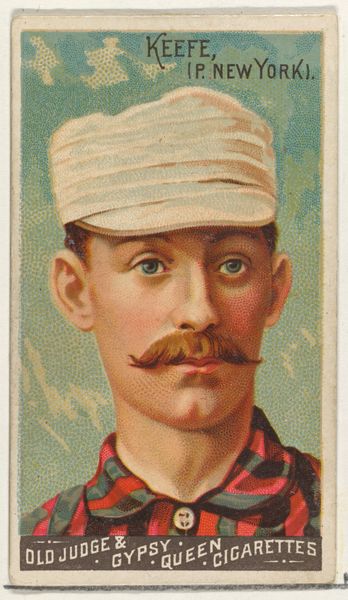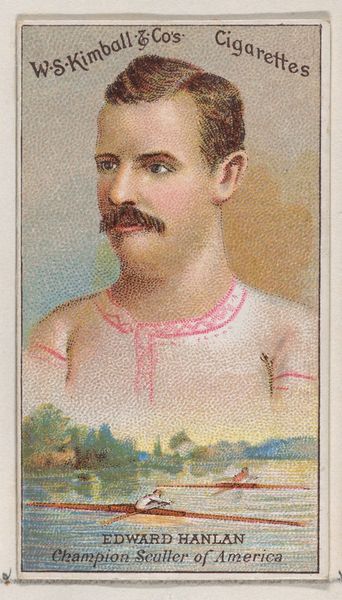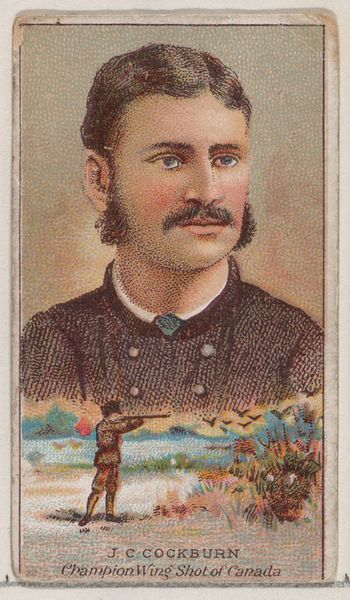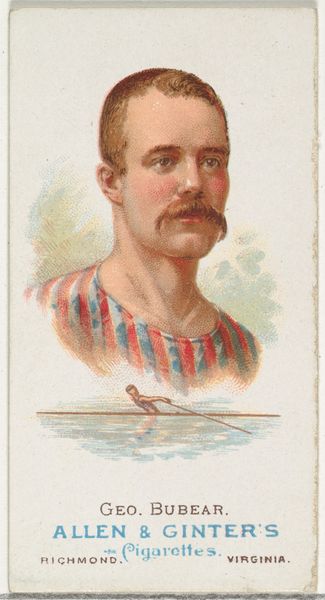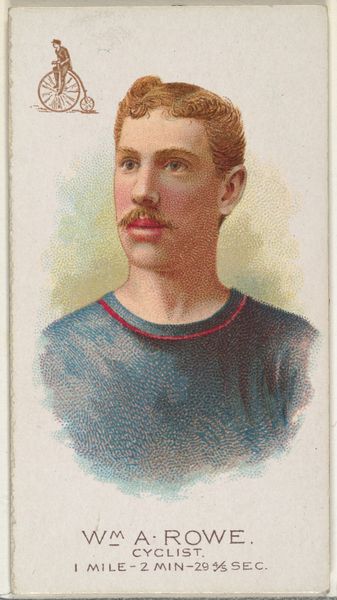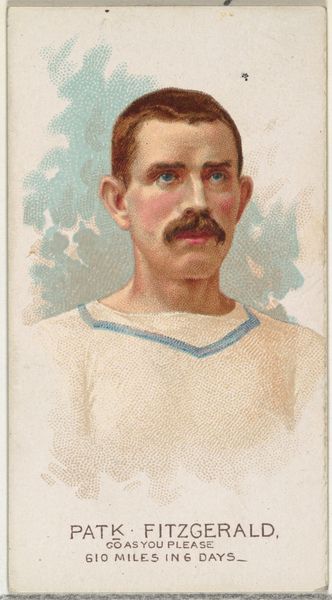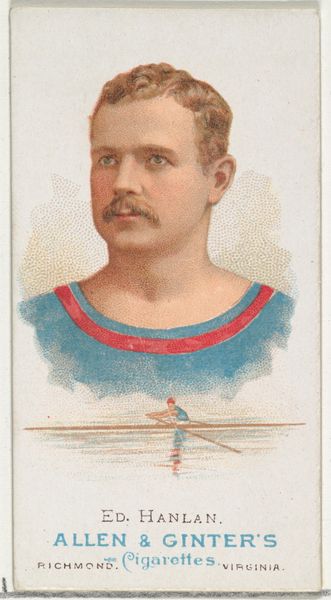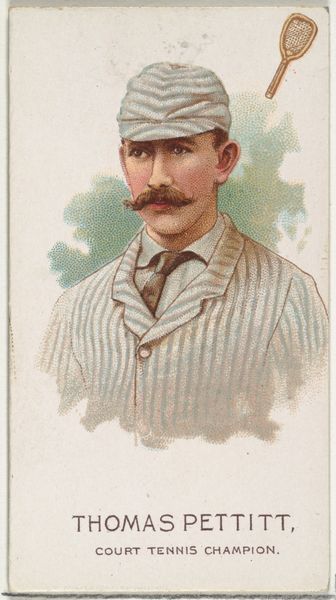
Hugh McCormack, Skater, from World's Champions, Series 2 (N29) for Allen & Ginter Cigarettes 1888
0:00
0:00
Dimensions: Sheet: 2 3/4 x 1 1/2 in. (7 x 3.8 cm)
Copyright: Public Domain
Curator: This is Hugh McCormack, Skater, a print from the "World's Champions, Series 2" made around 1888, published by Allen & Ginter Cigarettes. It is currently held at the Metropolitan Museum of Art. Editor: Immediately, I’m struck by the subtle coloring. The way the hazy salmon backdrop interacts with McCormack’s somber knit sweater creates a subdued yet intriguing tension, as though the athlete exists between worlds. Curator: The piece exists within a fascinating historical context. Allen & Ginter were pioneers in using such cards as a marketing strategy, distributing them with cigarette packs. The "World's Champions" series presented athletes and celebrities, promoting both the brand and popular culture. Editor: And there’s something fascinating about the compression of value here. How can a detailed drawing, executed with impressive control over shading and form, be reduced to commercial ephemera? McCormack’s stern visage speaks volumes about Victorian masculinity and the nascent professionalization of sport. Curator: Indeed. Note how his confident gaze directs outward, engaging directly with the viewer. Consider, too, that McCormack’s records appear right there on the print. Beyond its inherent formal qualities, it serves as a valuable piece of socio-cultural evidence of the sporting craze during the late 19th century, particularly considering how new technology fostered an environment where athletic accomplishments become public news. Editor: And how interesting that the material, a humble cigarette card, belies the skill apparent in the portrait itself. Note, too, how the slightly softened edges suggest the ephemeral, the fading glory of a champion momentarily captured. It serves, as you mentioned, as a capsule of its cultural moment, preserved inadvertently. Curator: What fascinates me is seeing this technique applied commercially, where its historical implications can become easily overlooked by historians and academics alike. This object’s meaning transforms, taking on an entirely different trajectory in how this period is discussed. Editor: Precisely. What begins as an exploration of compositional nuance leads us into the broader historical narrative. Perhaps the true artistry lies in its dual function as a formal exercise and historical record.
Comments
No comments
Be the first to comment and join the conversation on the ultimate creative platform.
